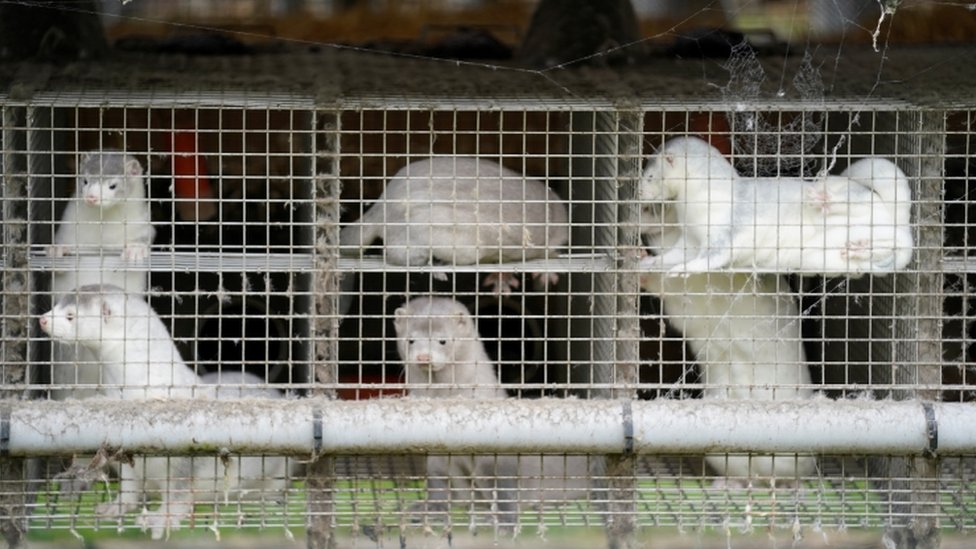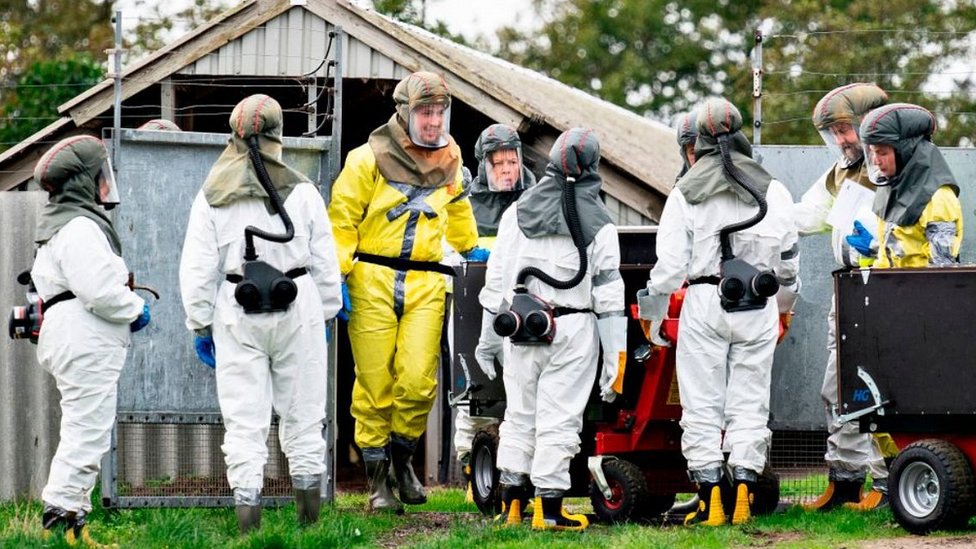#FURFARMING
Coronavirus: Denmark imposes lockdowns amid mink covid fears
Danish authorities have said a lockdown will be introduced in some areas over a coronavirus mutation found in mink that can spread to humans.
The government has warned that the effectiveness of any future vaccine could be affected by the mutation.
Bars, restaurants, public transport and all public indoor sports will be closed in seven North Jutland municipalities.
The restrictions will come into effect from Friday and initially last until 3 December.
It comes soon after an announcement that Denmark would cull all its mink - as many as 17 million.
The Scandinavian country is the world's biggest producer of mink fur and its main export markets are China and Hong Kong. Culling began late last month, after many mink cases were detected.
On Thursday, the World Health Organization said mink appear to be "good reservoirs" of coronavirus. It also commended Denmark's "determination and courage" for going ahead with the culls, despite the economic impact it would bring.

Coronavirus cases have been detected in other farmed mink in the Netherlands and Spain since the pandemic began in Europe.
But cases are spreading fast in Denmark - 207 mink farms in Jutland are affected - and at least five cases of the new virus strain were found. Authorities said 12 people had been infected with the mutated strain.
Meanwhile, Health Minister Magnus Heunicke said about half of the 783 human cases reported in north Denmark related to a strain of the virus that originated in the mink farms.
Under the new rules, gatherings of 10 or more people will be banned, and locals have been urged to stay within the affected municipalities and get tested.
At a press conference, Prime Minister Mette Frederiksen said: "Right now the eyes of the world are resting on us. I hope and believe that together we can solve the problems we face."
On Wednesday, Ms Frederiksen said the mutated virus had been found to weaken the body's ability to form antibodies, potentially making the current vaccines under development for Covid-19 ineffective.
Since the start of the pandemic Denmark has reported 52,265 human cases of Covid-19 and 733 deaths, data from Johns Hopkins University shows.
Spain culled 100,000 mink in July after cases were detected at a farm in Aragón province, and tens of thousands of the animals were slaughtered in the Netherlands following outbreaks on farms there.
Studies are under way to find out how and why mink have been able to catch and spread the infection.
Mink become infected through catching the virus from humans, the BBC's environment correspondent Helen Briggs reports.
But genetic detective work has shown that in a small number of cases, in the Netherlands and now Denmark, the virus seems to have passed the other way, from mink to humans, our correspondent adds.
CANADA HAS MINK FARMS
IN QUEBEC AND ONTARIO











